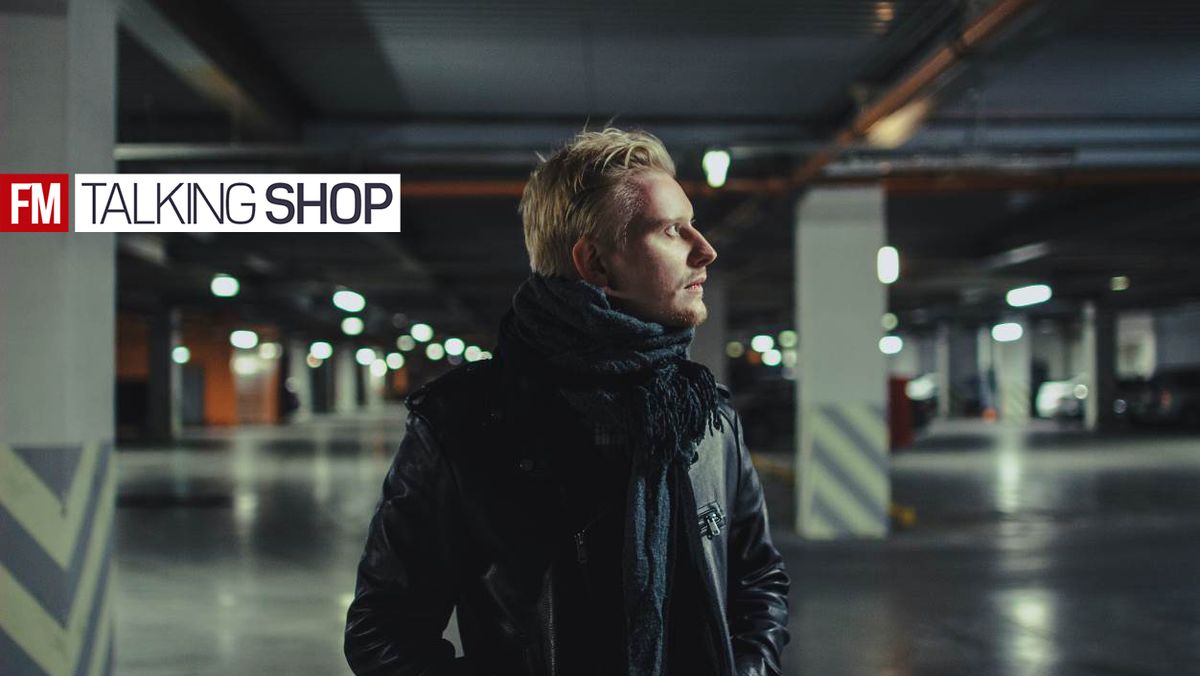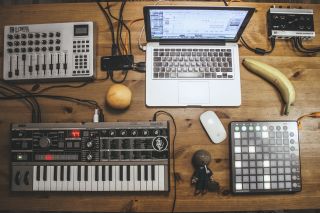Talking Shop: Nuage
Discover his top tools and tips for making music

The Russian producer may have started out in drum & bass, but recent releases have seen his sound evolve into more eclectic styles. Following the release of his new album, Wild, we tracked Nuage – aka Dimitry Kuzmin – down to find out how his working methods have taken root.
Wild is out now via Project:Mooncircle
When did you start making music, and how did you first get started?
“When I started with Nuage, I was about to write more drum & bass, but in the output my sounds turned into something like minimal, half-tempo electronica closer to 170bpm. I was very influenced of jungle and d&b when I just started, but I really wanted to keep a minimalistic and sophisticated element in the music.
“I only had a Celeron 2000 computer, speakers from the old vinyl recorder taken from my parents, and Propellerhead Reason 3, which gave me the chance to work with minimum CPU space on such an old computer.
“I signed my first track on 12-inch vinyl in 2011 on Medschool; they were releasing experimental and IDM influenced drum & bass, so I sent them demos for maybe a few months.”

Tell us about your studio/set-up
Get the MusicRadar Newsletter
Want all the hottest music and gear news, reviews, deals, features and more, direct to your inbox? Sign up here.
“I work at home almost all the time when writing music, then sometimes the final mixdown is done in Tramplin studio in St. Petersburg. I want to be as mobile and flexible as a possible with working from home or on the road, sketching ideas and thoughts at the laptop.
“I work with Korg Microkorg MK1, then for a DAW it's Propellerhead Reason and Ableton on a Mac Pro. VSTs are mostly those integral in Reason – Thor, Malstrom – they sounds really soft and deep, and it’s easily combined in Reason’s Combinator. I love the REX sampler and Propellerhead’s ReCycle too; it helps me to create my own exciting samples from everything I have.
“I still have a Novation Launchpad S for a quick sampling and Evolution UC33e MIDI Control Surface mixer works good for live performances. It seems to me that having a minimum of equipment makes me look for new ways of sound modulation, loop recording and arrangement, and new forms of overall musical inspiration. The only thing that would definitely help to me at the moment is to buy better monitors.”
What DAW (or DAWs) do you use, and why did you choose it?
“Reason is definitely my other set of hands. It's a unique DAW – for one thing it doesn’t overload the computer too much, secondly it's completely self-contained – almost everything I need in a music is in there. Now the next Reason version will be include VST support, so it’s very exciting to use your favourite VSTs in the new work space! Since I pay a lot of attention to sampling, the REX format and ReCycle are very important things.
“Alongside Reason, Ableton Live also helps me record various live jams with a synth and play live in clubs. These two pieces of software are very comfortable for quick and quality work with music.”
What one piece of gear in your studio could you not do without, and why?
“I think I can work with only my laptop, DAW and monitors/headphones for recording music, maybe if there wasn’t a Reason, I wouldn’t have written anything good on another software for a few months.”
What's the latest addition to your studio?
“The Microkorg. It helps me both in live performance and in a producing as well. It sounds really warm and is very intuitive, which is important. From time to time I’ll use it for jam sessions, then I record some presets and sounds, noises, arpeggios etc. into software to collect them for a future tracks. This is only one synth I have at the moment. I picked it around three years ago but didn’t use it for a long time. When I started to experiment with it it really opened my eyes to the world of hardware devices.”
What dream bit of gear would you love to have in you studio?
“I'd like to try an Elektron Analog Rytm, which is an incredible synth and analogue sampler. Besides the Microkorg I really like other Korg devices, for example I’m interested in the Volca Kick for drums.
“Another one is MFB Tanzbar drum machine, my friend makes awesome soft and deeply kicks with it, so I would like to use it. Maybe the Korg MS-20 mini too.”
When approaching a new track or project, where do you start?
“Normally, I start with the drums and then work with the rhythm. The next important elements for me are the melodies and synth stuff. Sometimes I using a VSTs or samples, sometimes I’ll jam on the synth and then pick one-shots for the NN-19 sampler or the REX looper. After that I’ll search for more samples – be sure to make noises, FX, stabs, then layer them one-by-one with the main idea. After that I look for the bass, vocal hooks often covering the bassline or melodies.
“This usually takes about a week, then I start to arrange all of this and add even more layers of sound. Sometimes I even open a new project to record a project with better mixdown.”
What are you currently working on?
“Just recently I released a new full length album, Wild, on Berlin based Project:Mooncircle. It took a full year of work and feels like I really grew up with this one. It came out on pink vinyl LP and in digital.
“I also recorded a big sample package for Zenhiser. The samples are called Tech Explorer, I think its can be helpful for those producers who are interested in the soft, experimental sounds of house, techno or drum & bass.
“Currently I’m working on a couple of remixes, and a live set, and starting to make a new music which will be coming later this year, hopefully!”
Nuage's essential music making tips...
Feel free to add more sounds
“My project often consists of seventy different tracks or more, I usually create separate groups or sub-mixes of instruments (using Reason’s Mixer 14:2) to unite them and use send FX. For example – I have a bass with middle and sub components – I divide them into two or more tracks. I cut off the low frequencies, and highlight the brightest sounds of mid. Then I’ll carefully add the low EQ of the bass on another track, for example by choosing the standard sub sine wave. For a better sounding effect with your bass, you can use a compressor for combining the sub and mid components into one mix. Normally I mix additional harmonics in the bass or lead synth. For example, I’ll add to the high or mid frequencies by using more samples, noises, or synths, then adjusting them by loudness, or I’ll add distortion or a small reverb.”
Do not overdo it with EQ
“Some musicians will advise you to get an ideal crystal mixdown by precise equalization of each sound. The mix sounds really clear, when you EQ sounds hard, but the final mixdown can loose the dynamics, which is so important for the unique sound of the track. In my music I often don’t equalize too much – just remove some of conflict things from the synth, percussion or snares (less the bass and kicks). The most important thing is to cut the real low frequencies, and use a little bit of compression to put the sound in the mix, in this case the result will be fresh and more interesting.”
Sample!
“Don’t be afraid to sample and use sound banks or libraries, especially if you don’t have much experience in creating or synthesising your own sounds – or if you don’t have a powerful computer. I’ll sometimes sample from VST plug-ins too – converting it into the REX format so I can slice them as I want and create a different melody or sound by playing with transpose, pitch and the loop tempo. It can come up with something completely different. Any sample – even a small piece of a loop – is a great starting point to work with, you can mix, blend, add effects, interpret some moments from other tracks (preferably just small sounds). Sampling is an important part of electronic music; I really think it’s an art.”


Future Music is the number one magazine for today's producers. Packed with technique and technology we'll help you make great new music. All-access artist interviews, in-depth gear reviews, essential production tutorials and much more. Every marvellous monthly edition features reliable reviews of the latest and greatest hardware and software technology and techniques, unparalleled advice, in-depth interviews, sensational free samples and so much more to improve the experience and outcome of your music-making.

“I’m not the technical producer, I’ve learned how to use a compressor but I haven’t learned why it does what it does”: Revisiting the intuitive production skills that made Avicii a superstar

"The main thing holding people back is that they don't believe their music's good enough, when most of the time it is": Ambient grime producer Mr. Mitch on his new album, the challenges of being a producer, and the secret to finishing more music
Most Popular








